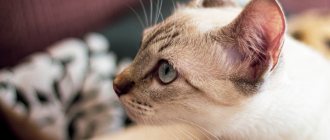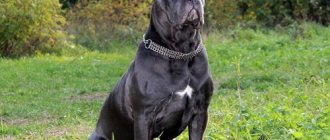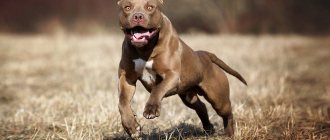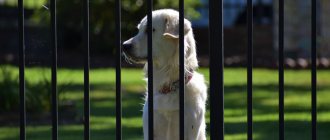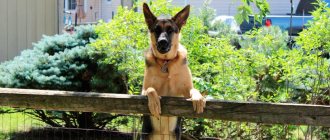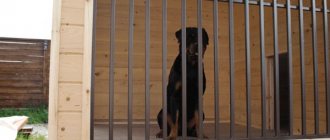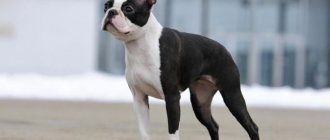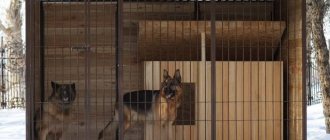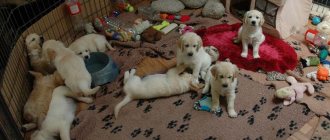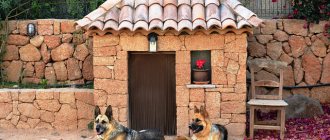Home » Dog Breeds
Let's face it, too many people decide they want a cute little adorable dog to love and care for. They spend a huge amount of time and money to choose that perfect dog, but after a couple of months, when the effect of novelty wears off, the animal is left without attention, and at the same time comes the understanding that having a dog is work.
We just want to go up to such people, shake them and shout: “A dog is not a decoration for the lawn or a trinket for the house!” In addition to the basic needs - water, food and a place to sleep - the dog needs attention, affection, emotions, grooming, and physical activity.
For those who still want to get a dog, but don’t want to walk it 30 minutes a day, spend time and money on training, or take it to the groomer every week, we offer this list of easy-to-own dogs. We understand that there are people who, for whatever reason, are physically unable to walk their dog every day, but still need a companion. In that case, just ignore the word “lazy” in the title of the article and continue reading.
Note: We are not at all advocating ignoring any animal or neglecting its needs—we just ask that you do not get an energetic Border Collie if just walking to the car makes you irritated. And you shouldn’t adopt a Shih Tzu that requires constant care if you’re too lazy to comb your own hair. Take home a dog who, for a tenth of the care, will love you just as much.
- 2 Japanese Chin
- 3 Greyhound
- 4 Bullmastiff
- 5 Pug
- 6 Glen of Imaal Terrier
- 7 Bulldog
- 8 Pagle
- 9 Rat Terrier (Ratcatcher Terrier)
- 10 Chihuahua
Bolognese (French lap dog)
The breed is believed to have originated in southern Italy from dogs like the Bichon Frize. Until the early 19th century, bolognese were popular as companions among the royal court and nobility of Spain. This is a robust breed of toy companion dog without any of the typical genetic problems. Consider the needs of Bolognese:
The space requirement is minimal. The Bolognese will be a great dog for your apartment. This indoor and decorative breed has a strong build and weighs 3-6 kg - this is comparable to the size of a baby.
You can find out about other dog breeds that are great for keeping in an apartment here:
The need for physical activity is minimal. Bologneses are playful, but not very active. Periodic, but not regular walks are suitable for them.
The need for training is minimal. These dogs are very intelligent and easy to train. They can be shy around strangers, but are great with children and other animals.
The need for grooming is moderate. This is a long-haired breed with white fur. It mats easily but doesn't shed much and is considered hypoallergenic.
Peculiarities
Comfortable conditions directly affect the behavior and character of the animal. This can affect both the pet’s health and its development. Therefore, it is important to keep the apartment clean and tidy, brush the pet itself, especially during shedding, and wash its paws every time after a walk. Then the dog itself will understand that there is no need to litter and dirty the apartment.
When choosing, you should pay attention to its size. It is advisable to select a small breed for an apartment. You can take a large pet, but you need to remember that you will have to allocate a lot of space for it. The dog will also shed and leave behind a lot more fur. Therefore, it is better to leave this breed for a house or a large apartment.
It's worth learning about the personalities of different breeds.
Loud barking dogs can disturb neighbors, and for playful pets you will need to allocate a place for games and buy toys. You also need to find out how the dog behaves with children of different ages. For example, Pekingese and Pugs can be jealous of their owners towards the child and behave more aggressively with the latter. Attention! During molting, the animal will have to be brushed frequently and thoroughly.
Long-haired breeds are much easier to care for than short-haired ones. This is due to the fact that short hairs can get lost in the carpet and get into your eyes, making them difficult to remove from clothing. However, the problem can be solved by trimming the animal during this period.
Japanese Chin
The Japanese Chin (also known as the Japanese Spaniel) was actually bred in China and brought to Japan as a gift from the Emperor. This breed became very popular among the Japanese nobility, and Japanese Chins were first brought to Europe in the early 19th century.
The space requirement is minimal. These small dogs weigh only 1.8-3.2 kg and their size barely reaches 30 cm.
If you are interested in other small dog breeds, we recommend reading the article
The need for training is minimal. Japanese Chins are intelligent, quiet and reserved dogs. They get along well with almost everyone, including strangers, children and other animals. They are also very aware of their surroundings.
The need for physical activity is minimal. These dogs seem to be created to sit on their owners' laps. In addition, due to their shortened muzzle, excessive exercise can lead to breathing and heart problems. Periodic short walks are ideal.
The need for grooming is moderate. The coat of the Japanese Chin requires regular brushing to keep it shiny and the dog to look well-groomed. Small shedding occurs throughout the year, but without a specific odor.
Disadvantages: difficult to train during the first 4 months of life. Possible health problems include: kneecap displacement, heart disease, back disease, cataracts.
Primary requirements
Funny dog breeds: the coolest in the world
The most unpretentious dogs are the best choice for modern people. They do not require special conditions, but they look great and do not leave behind an abundance of fur, so daily wet cleaning is not required. These breeds are unpretentious in everything, from nutrition to hygiene, and the health status of many representatives cannot but rejoice. Visits to the veterinarian are usually preventative.
However, before making the final choice, you should decide on the characteristics of the dogs, since, despite their undemanding nature, some of them have a rather difficult character. For example, a phlegmatic and outwardly calm basset hound is a real uncontrollable domestic tyrant; if you miss the moment and allow the dog to take over, it will be very difficult to restore authority to the owner.
A dog can become a faithful friend even to those who do not have the opportunity to spend a long time caring for it.
Greyhound
Greyhound dog in the list of ten best dogs for lazy owners?! Yeah, live and learn. Yes, greyhounds are very fast over short distances, but their energy does not last long. In fact, for their unusual combination of high speed and love of lounging on their pillows, they were even nicknamed “high-speed lazy people” or “sofa potatoes.” Greyhounds have been living and hunting with humans for a very long time; mentions of them are found even among the ancient Egyptians and Greeks. What do greyhounds need for a happy life?
The space requirement is small. Yes, this is a really large breed (height is approximately 70 cm and weight is 26-40 kg), but these dogs also feel comfortable in small spaces. Generally, Greyhounds are quiet, gentle animals and are more suitable as an apartment dog than smaller, more active breeds.
The need for training is rather small. Greyhounds are quite obedient and get along well with strangers, school-age children, and other dogs. You may have to train them to behave well around small children and small animals.
The need for physical activity is low to moderate. Yes, Greyhounds are excellent sprinters and enjoy running, but they don't need regular exercise. Walking 20-30 minutes every day will help older dogs stay healthy.
The need for grooming is small. Greyhounds have short, soft fur and no undercoat. These dogs are suitable for people with allergies.
Disadvantages: Increased skin sensitivity and sensitivity to extreme temperatures.
More information about greyhounds:
Toy Terrier
Photo: achcouch/Depositphotos
- Height at withers: up to 23 cm.
- Weight: up to 3 kg.
- Average life expectancy: up to 11–12 years.
Miniature Toy Terriers are very elegant, energetic and active animals. They combine fragility with courage, so they will selflessly protect their owner, and sometimes they can without hesitation show aggression towards much larger dogs.
These dogs are very smart and amenable to training, so raising them will not be difficult. Toy terriers easily get used to a tray or diaper. But this does not eliminate the need for walks in the fresh air, which are very beneficial for animals and help provide an outlet for energy.
Dogs are very loyal towards people. They also easily find a common language with children, but it is worth considering that due to carelessness, a child can accidentally injure a fragile animal.
Take note
